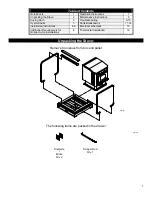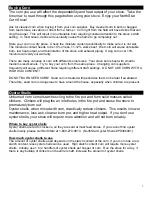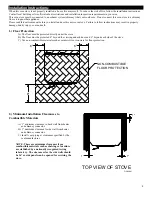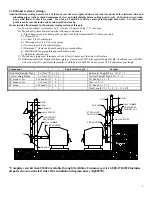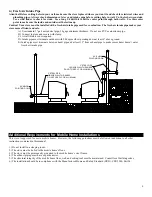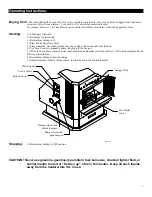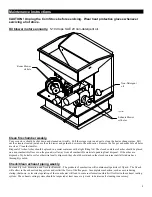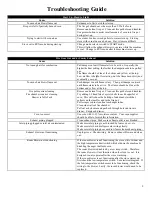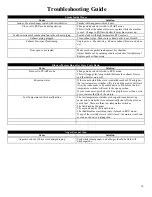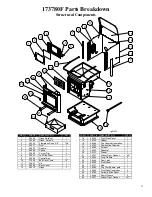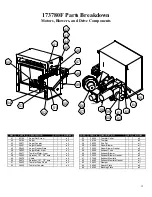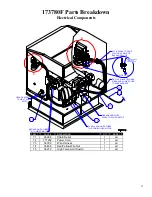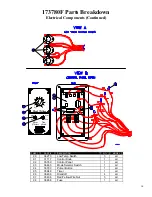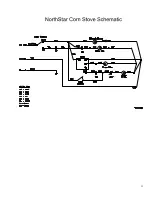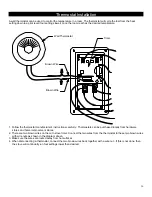
6
4.) Fresh Air Intake Pipe
Attention! Before cutting holes in your wall, make sure the stove is placed where you want it and check for electrical wires and
plumbing pipes. Always check dimensions of stove and intake pipe before cutting hole in wall. Cut holes between studs.
Use a stud finder to check for studs. Use a long 1/4 drill bit to drill a center point through both walls. Use this center
point to make sure the inside and outside wall holes line up.
Caution! Your stove must be installed with a fresh air intake pipe used for combustion. The fresh air intake pipe makes your
stove more efficient and safe.
A.) Use standard 3” galvanized steel pipe, 30 gage minimum thickness. Do not use PVC or aluminum pipe.
B.) Connect to stove and secure with clamp.
C.) A wall thimble is not required.
D.) Intake pipe must terminate outdoors with 90 degree elbow pointing down at least 6” above ground.
E.) Intake pipe must terminate below exhaust pipe and at least 12” from exhaust pipe to make sure exhaust doesn’t enter
freash air intake pipe.
FIG00979
3" STEEL PIPE
30GAGE WALL THICKNESS
DO NOT USE PVC OR ALUMINUM
3" STEEL PIPE
30GAGE WALL THICKNESS
DO NOT USE PVC OR ALUMINUM
90° ELBOW
POINTING DOWN
90° EBLOW
POINTING DOWN
Additional Requirements for Mobile Home Installations
This stove is approved for use in mobile homes. However, the following guidelines must be followed in addition to all other
instructions contained in this manual.
1.) Do not install in a sleeping room.
2.) The stove must be bolted to the mobile home’s floor.
3.) The stove must be permanently grounded to the mobile home’s steel frame.
4.) The exhaust piping must have a spark arrestor.
5.) The structural integrity of the mobile home floor, wall, and ceiling/roof must be maintained. Consult local building codes.
6.) The installation should be in compliance with the Manufactured Home and Safety Standard (HUD), CFR 3280, Part 24.
Summary of Contents for MSTOVEF CS550
Page 15: ...15 ...


